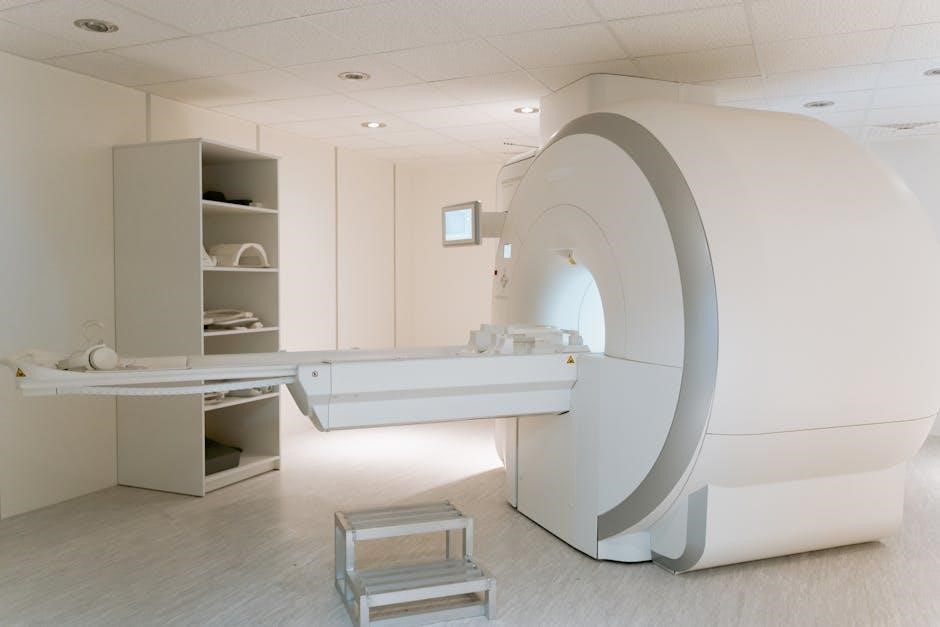sassi assessment pdf
Get instant access to the SASSI assessment PDF! Download quickly and easily. Reliable and up-to-date resource for your needs.
Overview of the SASSI Assessment
The Substance Abuse Subtle Screening Inventory (SASSI) is a widely used, self-report screening tool designed to identify individuals at risk of substance use disorders. It assesses alcohol and drug use patterns, behavioral indicators, and psychological correlates associated with substance abuse. The SASSI is brief, easy to administer, and highly effective in clinical and non-clinical settings, providing valuable insights for professionals. Its high accuracy and non-invasive approach make it a reliable resource for early detection and intervention.
The Substance Abuse Subtle Screening Inventory (SASSI) is a self-report questionnaire designed to identify individuals with a high probability of substance use disorders. It combines face-valid (obvious) and subtle (indirect) items to assess patterns of alcohol and drug use, as well as related behavioral and psychological factors. The SASSI is brief, requiring only 15 minutes to complete, and is widely used in clinical, healthcare, and counseling settings. Its unique approach allows it to detect substance use issues even when respondents may not openly acknowledge them. The inventory is available in adult and adolescent versions, with translations for Spanish-speaking populations. Professionals rely on the SASSI for its accuracy and non-invasive nature, making it a valuable tool for early intervention and treatment planning.

1.2 Purpose and Scope of the SASSI Assessment PDF
The purpose of the SASSI Assessment PDF is to provide a comprehensive tool for identifying individuals at risk of substance use disorders. It serves as a guide for professionals, offering insights into the symptoms of substance abuse and addiction. The PDF includes detailed information about the structure of the questionnaire, administration guidelines, and interpretation of results. Its scope extends to clinical settings, treatment centers, and healthcare providers, aiding in early detection and intervention. The SASSI Assessment PDF also outlines the tool’s effectiveness in assessing both obvious and subtle indicators of substance use, making it a valuable resource for diagnosing and monitoring individuals across various populations.
1.3 Brief History and Evolution of the SASSI
The Substance Abuse Subtle Screening Inventory (SASSI) was first introduced in the 1980s as a pioneering tool for detecting substance use disorders. Over the years, it has undergone significant refinements to enhance its accuracy and adapt to changing diagnostic criteria. The SASSI-3, developed by Miller and Lazowski in 1999, introduced a combination of face-valid and subtle questions, improving its ability to identify substance use patterns. The latest version, SASSI-4, aligns with DSM-5 criteria, screening for mild, moderate, and severe substance use disorders. This evolution reflects ongoing research and the need for more precise assessment tools in clinical and non-clinical settings. Each iteration has strengthened the SASSI’s effectiveness in identifying individuals at risk, making it a trusted resource for professionals worldwide.

SASSI-3: Features and Applications
The SASSI-3 combines face-valid and subtle questions to identify substance use disorders effectively. It is quick, taking just 15 minutes to complete, and is widely used in clinical and non-clinical settings.
2.1 Structure and Content of the SASSI-3 Questionnaire
The SASSI-3 questionnaire is structured into two main parts: face-valid and subtle questions. It includes 81 items, with 67 true/false questions and 14 self-rating questions. The face-valid questions directly assess substance use behaviors, while the subtle questions identify patterns associated with substance dependence. The questionnaire is designed for adults aged 18 and older and takes approximately 15 minutes to complete. It incorporates scales such as the Face Valid Alcohol (FVA) and Face Valid Drug (FVD) scales, as well as the Subtle Items scale. The SASSI-3 also includes validity scales like the Defensiveness (DEF) and Supplemental Validity Index (SVI) to assess response patterns. A Spanish version is available, making it accessible to diverse populations. The scoring process is straightforward, allowing clinicians to quickly interpret results and identify individuals at high risk of substance use disorders.
2.2 Validation and Reliability of the SASSI-3
The SASSI-3 demonstrates strong validation and reliability, supported by extensive research. Studies have shown high accuracy in identifying substance use disorders, with overall accuracy rates of 93%. The instrument’s validity is established through correlations with other assessment tools, such as the MMPI, and its effectiveness in clinical settings. Reliability testing indicates consistent results across administrations, ensuring dependability. The questionnaire’s design minimizes biases, making it suitable for diverse populations. Its subtle scales are particularly effective in detecting substance use patterns, even when respondents may underreport. Validation studies across different demographics, including Spanish-speaking populations, further confirm its robustness. These attributes make the SASSI-3 a trusted tool for professionals in substance abuse assessment and treatment planning.
2.3 Administration and Scoring Guidelines for SASSI-3
The SASSI-3 is a self-report questionnaire designed for individuals aged 18 and older, typically completed in 15 minutes. It consists of 81 items, divided into face-valid and subtle scales, which assess substance use behaviors and related psychological patterns. Administration is straightforward, requiring minimal training, and can be conducted in both clinical and non-clinical settings. Scoring is done manually using a provided key or through automated software, yielding a profile that categorizes risk levels. Results are interpreted based on empirically derived cut-offs, with high scores indicating a higher probability of substance use disorders. The SASSI-3 also includes a Spanish version, ensuring accessibility for diverse populations. Its ease of use, brevity, and clear scoring guidelines make it a practical tool for professionals in substance abuse assessment and treatment planning.

SASSI-4: Advanced Screening for Substance Use Disorders
The SASSI-4 is an advanced tool for identifying substance use disorders, aligning with DSM-5 criteria to assess severity levels from mild to severe. It includes a new Prescription Drug scale to better detect misuse, enhancing early detection and intervention strategies for individuals at risk.
3.1 Key Differences Between SASSI-3 and SASSI-4
The SASSI-4 introduces several advancements over the SASSI-3, primarily in its ability to screen for Substance Use Disorder (SUD) across the full DSM-5 continuum of severity, including mild, moderate, and severe levels. Unlike the SASSI-3, the SASSI-4 includes a new Prescription Drug (Rx) scale, designed to identify individuals abusing prescription medications more effectively. This enhancement improves early detection of emerging substance use issues. Additionally, while the SASSI-3 focused on identifying high-risk individuals, the SASSI-4 provides a more nuanced assessment, making it a more comprehensive tool for clinicians. Both versions maintain the core structure and ease of administration but the SASSI-4 offers improved accuracy and relevance for modern substance use challenges.
3.2 New Features in the SASSI-4 Assessment
The SASSI-4 introduces several innovative features that enhance its effectiveness in identifying substance use disorders. One of the most notable additions is the Prescription Drug (Rx) scale, which specifically screens for prescription medication abuse, addressing a growing public health concern. Additionally, the SASSI-4 aligns with the DSM-5 criteria, allowing for a more accurate assessment of substance use severity across mild, moderate, and severe levels. The updated tool also incorporates subtle and face-valid scales to improve detection, ensuring comprehensive and nuanced evaluations. These enhancements make the SASSI-4 a more versatile and precise instrument for clinicians and professionals in substance abuse treatment settings. The new features ensure better identification of at-risk individuals and provide clearer guidelines for intervention and treatment planning.
3.3 Spanish Version of the SASSI-4
The SASSI-4 is available in a Spanish version, ensuring accessibility for Spanish-speaking populations. This version includes Spanish questionnaires, profiles, and scoring instructions, along with an English translation for ease of use. The Spanish SASSI-4 maintains the same structure and validation standards as the English version, providing consistent and reliable results. It is designed to address the cultural and linguistic needs of diverse populations, making it a valuable tool for clinicians working with Spanish-speaking clients. The Spanish version is sold separately and must be purchased through authorized distributors to ensure authenticity and compliance with usage guidelines. This adaptation underscores the commitment to inclusivity and effectiveness in substance use disorder screening across diverse demographics.

Clinical Applications of the SASSI Assessment
The SASSI assessment is a versatile tool used in clinical settings to identify high-risk individuals, guide treatment planning, and monitor progress. It aids in early detection of substance use disorders and provides insights for tailored interventions, enhancing patient outcomes and care effectiveness.
4.1 Identifying High-Risk Individuals for Substance Use Disorders
The SASSI assessment is a highly effective tool for identifying individuals at risk of substance use disorders. Its self-report questionnaire evaluates alcohol and drug use patterns, behavioral indicators, and psychological correlates. The inventory’s subtle and face-valid scales detect both overt and hidden signs of substance abuse, ensuring comprehensive screening. With an overall accuracy of 93%, it is particularly useful for early detection in clinical, healthcare, and criminal justice settings. The SASSI’s ability to identify high-risk individuals enables early intervention, reducing the progression of substance use disorders. Its non-invasive nature encourages honest responses, making it a reliable resource for professionals aiming to address substance abuse issues effectively. This early identification is crucial for implementing timely and targeted interventions, improving outcomes for individuals at risk.
4.2 Role of the SASSI in Treatment Planning and Monitoring
The SASSI assessment plays a pivotal role in treatment planning and monitoring by providing insights into an individual’s substance use patterns and associated risks. Its ability to identify subtle indicators of substance abuse helps clinicians tailor treatment plans to address specific needs. The SASSI profiles enable professionals to monitor progress over time, ensuring interventions are adjusted as necessary. Additionally, the tool’s face-valid and subtle scales offer a comprehensive approach to understanding the severity of substance use, aiding in the development of targeted strategies. By integrating SASSI results with other clinical data, healthcare providers can create personalized treatment pathways, enhancing the effectiveness of care. This dual capability of identifying high-risk individuals and guiding treatment makes the SASSI an invaluable resource for clinicians seeking to improve patient outcomes.
4.3 Using the SASSI in Combination with Other Assessment Tools
The SASSI is often utilized in conjunction with other assessment tools to enhance the accuracy and comprehensiveness of substance use evaluations. Tools like the AUDIT, CAGE, and MAST complement the SASSI by addressing different aspects of substance use, such as alcohol-specific behaviors or broader substance-related issues. Combining these tools allows clinicians to cross-validate findings, ensuring a more robust assessment of an individual’s condition. This multi-tool approach is particularly useful for identifying subtle or co-occurring disorders that may not be evident through a single assessment method. By integrating SASSI results with other instruments, professionals can develop a more nuanced understanding of an individual’s substance use patterns and associated risks, ultimately leading to more effective treatment strategies and better patient outcomes.

Providing Feedback to Clients Based on SASSI Profiles
Providing feedback involves interpreting SASSI profiles to enhance client awareness and engagement. Clinicians use face-valid scales and decision rules to communicate results clearly, fostering understanding and motivating positive change. Learn more.
5.1 Understanding Face-Valid Scales and Decision Rules
The SASSI assessment includes face-valid scales, which are straightforward questions directly related to substance use, and subtle scales, which are less apparent but highly predictive of substance use disorders. Decision rules, derived from empirical data, guide the interpretation of scale scores to determine the likelihood of a substance use disorder. These rules help clinicians identify individuals who may require further evaluation or intervention. Understanding these components is essential for accurate profile interpretation and effective client feedback. By combining face-valid and subtle measures, the SASSI enhances the detection of substance use issues, even among individuals who may minimize or deny their use. This dual approach ensures a comprehensive assessment, aiding professionals in making informed decisions for treatment planning and monitoring.
5.2 Communicating Results to Enhance Client Awareness and Engagement
Effectively communicating SASSI results is crucial for fostering client awareness and engagement in the treatment process. By presenting the findings in a clear, non-confrontational manner, professionals can help clients understand their substance use patterns and potential risks. The SASSI profile provides a framework for discussing face-valid and subtle indicators of substance use, enabling clients to recognize behaviors they may have minimized or denied. This open dialogue can enhance trust and encourage clients to take an active role in addressing their issues. Additionally, the structured feedback process supports the development of personalized treatment plans, promoting collaboration between clients and healthcare providers. Clear communication of SASSI results not only educates clients but also motivates them to seek appropriate interventions, ultimately supporting their journey toward recovery and long-term well-being.

Case Studies and Real-World Applications
This section explores real-world applications of the SASSI assessment, highlighting successful implementations in clinical settings and substance abuse treatment programs, demonstrating its effectiveness in identifying and addressing substance use disorders.
6.1 Successful Implementation of SASSI-3 in Clinical Settings
The SASSI-3 has been widely implemented in clinical settings to identify individuals at high risk of substance use disorders. Its brevity and ease of administration make it a practical tool for busy clinical environments. Studies have shown that the SASSI-3 effectively identifies substance dependence disorders with an overall accuracy of 93%, making it a reliable screening instrument. Clinicians appreciate its ability to detect subtle indicators of substance abuse that may not be apparent through other assessment methods. The SASSI-3’s structure, combining face-valid and subtle scales, allows for comprehensive insights into an individual’s substance use patterns. Its application in treatment planning and monitoring has proven invaluable, enabling professionals to tailor interventions to specific client needs. The tool’s efficiency and effectiveness have made it a cornerstone in many clinical programs focused on substance abuse treatment and recovery.

6.2 Practical Examples of SASSI-4 in Substance Abuse Treatment
The SASSI-4 has proven to be a valuable tool in substance abuse treatment, offering enhanced screening capabilities for substance use disorders (SUDs) across the DSM-5 severity spectrum. One practical example is its use in early intervention for individuals with mild SUDs, where the SASSI-4’s sensitivity helps identify subtle signs of substance misuse. Clinicians often use the Prescription Drug (Rx) scale to detect abuse of prescription medications, a growing concern in treatment settings. For instance, in a clinical case, the SASSI-4 identified a client at risk of prescription opioid abuse, enabling timely intervention. The tool’s ability to provide nuanced feedback facilitates personalized treatment plans and monitoring. Its application in combination with other assessments further strengthens treatment outcomes, making it a practical and effective resource for addressing substance use disorders in real-world clinical scenarios.

Future Directions and Emerging Trends
The SASSI assessment continues to evolve with advancements in technology, improving accessibility and expanding its utility for diverse populations. Future updates aim to enhance its digital platform and broaden its applications in substance use disorder screening.
7.1 Advances in SASSI Technology and Accessibility
Recent advancements in SASSI technology have focused on enhancing accessibility and usability. The development of a digital platform allows for easier administration and scoring, reducing barriers for clinicians. The integration of the SASSI-4 with electronic health records (EHR) systems streamlines data management and improves efficiency. Additionally, the introduction of a Spanish version ensures broader reach and inclusivity for diverse populations. The SASSI-4 now includes a new Prescription Drug (Rx) scale, improving detection of prescription medication abuse. Automated scoring and reporting features reduce administrative burdens, enabling faster feedback. These technological improvements ensure the SASSI remains a cutting-edge tool for substance use disorder screening, addressing modern clinical needs while maintaining its high accuracy and reliability.
7.2 Expanding the Scope of SASSI for Diverse Populations
Efforts to expand the SASSI’s applicability to diverse populations have been a key focus in recent years. The development of the SASSI-4 Spanish version ensures accessibility for non-English speaking individuals, addressing cultural and linguistic barriers. Additionally, the SASSI-A3 is tailored for adolescents, providing age-specific assessments. The instrument has also been adapted for use in various cultural contexts, ensuring its validity across different demographic groups. These expansions aim to enhance the tool’s inclusivity, making it more effective for a broader range of individuals. By addressing diverse needs, the SASSI continues to evolve as a comprehensive resource for substance use disorder screening, promoting equity in assessment and intervention.

The SASSI assessment remains a vital tool in identifying and managing substance use disorders, offering proven accuracy and adaptability. Its evolution and accessibility ensure continued impact in clinical and public health settings.
8.1 Summary of the SASSI Assessment’s Impact and Utility
The SASSI assessment has proven to be a highly effective tool in identifying individuals at risk of substance use disorders, with an overall accuracy of 93%. Its ability to detect subtle indicators of substance abuse, regardless of respondent honesty, makes it a reliable resource for clinicians and professionals. The SASSI-3 and SASSI-4 versions have expanded its utility, with the SASSI-4 incorporating DSM-5 criteria and a new Prescription Drug scale. Its brevity and ease of administration make it accessible for use in various settings, from clinical environments to public health initiatives. By providing early detection and insights, the SASSI assessment plays a crucial role in treatment planning and monitoring, ultimately contributing to better outcomes for individuals struggling with substance use disorders. Its adaptability and continuous evolution ensure its lasting impact in addressing substance abuse challenges.

